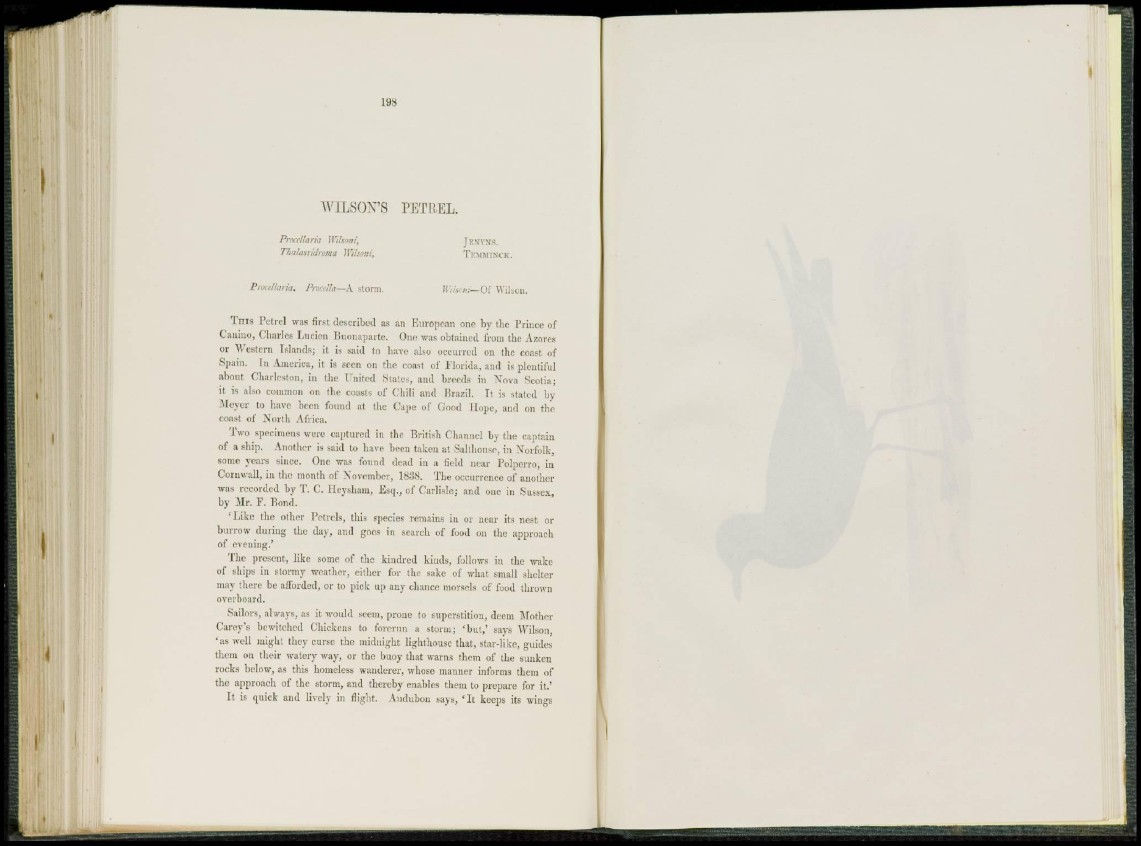
W I L S O N ' S P E T R E L.
Pmcdlaria Wihoni, JF.NVNS.
ThalassiJwma Wihoni, TEMMINCK.
Procdhm'a. Pnxdla—A storm. Wilscni—Of Wilson.
T i n s Petrel was first described as an European one by the Prince of
Canino, Charles Lucien Buonaparte. One was obtained from the Azores
or Western Islands; it is said to have also occurred on the coast of
Spain. In America, it is seen on the coast of Florida, and is plentiful
about Charleston, in the United States, and breeds in Nova Scotia;
it is also common on the coasts of Chili and Brazil. It is stated by
Meyer to have been found at the Cape of Good Hope, and on the
coast of North Africa.
Two specimens were captured in the British Channel by the captain
of a ship. Another is said to have been taken at Salthouse, in Norfolk,
some years since. One was found dead in a field near Polperro, in
Cornwall, in the month of November, 1838. The occurrence of another
was recorded by T. C. Ilcysham, Esq., of Carlisle; and one in Sussex,
by Mr. F. Bond.
' L i k e the other Petrels, this species remains in or near its nest or
burrow dining the day, and goes in search of food on the approach
of evening.'
The present, like some of the kindred kinds, follows in the wake
of ships in stormy weather, either for the sake of what small shelter
may there be afforded, or to pick up any chance morsels of food thrown
overboard.
Sailors, always, as it would seem, prone to superstition, deem Mother
Carey's bewitched Chickens to forerun a storm; 'but,' says Wilson,
' a s well might they curse the midnight lighthouse that, star-like, guides
them on their watery way, or the buoy that warns them of the sunken
rocks below, as this homeless wanderer, whose manner informs them of
the approach of the storm, and thereby enables them to prepare for it.'
I t is quick and lively in flight. Audubon says, ' I t keeps its wings
il